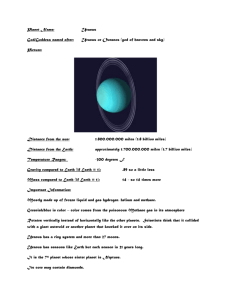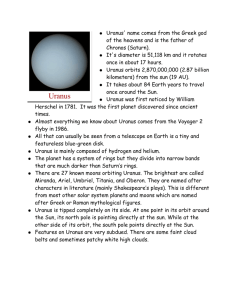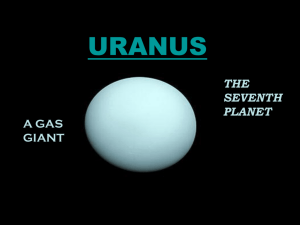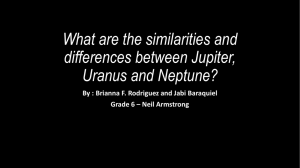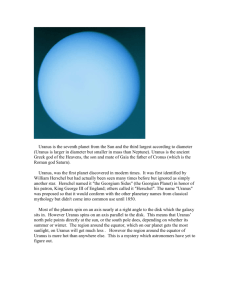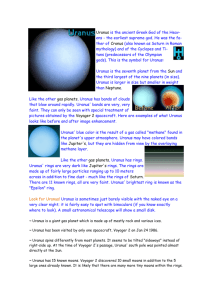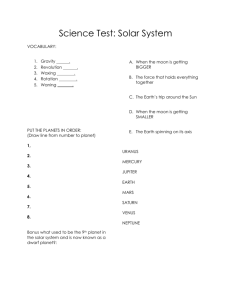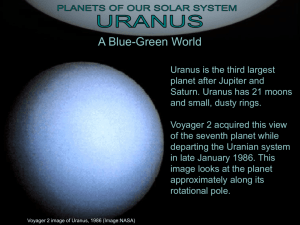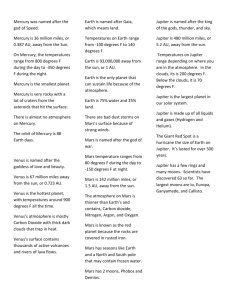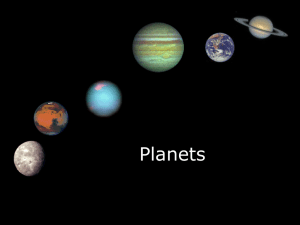Uranus - Peterborough Astronomical Association
advertisement
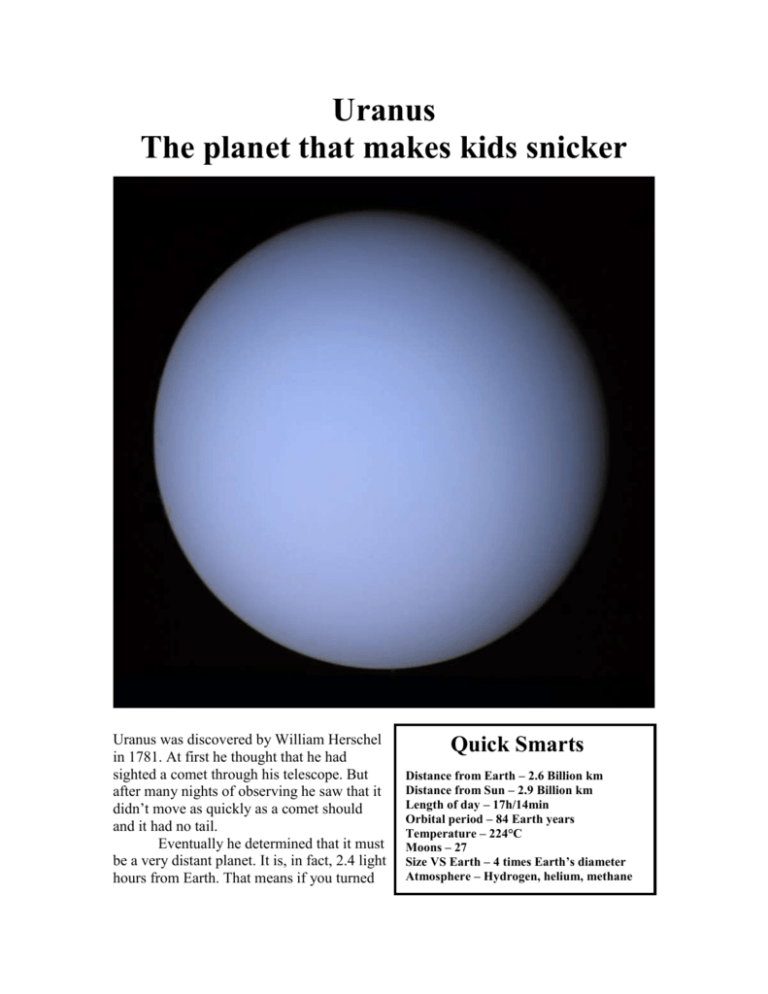
Uranus The planet that makes kids snicker Uranus was discovered by William Herschel in 1781. At first he thought that he had sighted a comet through his telescope. But after many nights of observing he saw that it didn’t move as quickly as a comet should and it had no tail. Eventually he determined that it must be a very distant planet. It is, in fact, 2.4 light hours from Earth. That means if you turned Quick Smarts Distance from Earth – 2.6 Billion km Distance from Sun – 2.9 Billion km Length of day – 17h/14min Orbital period – 84 Earth years Temperature – 224°C Moons – 27 Size VS Earth – 4 times Earth’s diameter Atmosphere – Hydrogen, helium, methane on a very powerful spotlight from Earth, and aimed it at Uranus, it would take 2.4 hours for the light to get to get there – and light travels at nearly 300,000 kilometres per second! Uranus, god of the sky. Once the blue blob was determined to be a planet, a great debate ensued as to what it should be named. Herschel recommended it be called George Sidus in honour of King George III who kept Herschel in beer and beanie weenies. Some would call that sucking up to the boss. The French took a different point of view and recommended that the newcomer to our solar system be named after its founder. So for a very brief time Planet Herschel was in existence. Ultimately the decision was made by England’s Astronomer Royal. In keeping with tradition, the new planet was named after one of the Roman gods – Uranus who was the god of the sky. So if amateur astronomy had a god, Uranus would be our boy As planets go, Uranus is an odd ball. It is tilted nearly 98° from vertical. So many astronomers say that Uranus rolls around the Sun like a barrel. Because it is a side roller, the moons of Uranus orbit it from top to bottom. So how did this happen? Astronomers think that early during our solar system’s formation Uranus could have been dealt a tremendous blow by an Earth-sized planet that tipped it over. It also has rings. At last count they tallied up to 13. But unlike Saturn’s rings, the rings of Uranus aren’t visible – even through a telescope. Speaking of telescopes, Uranus holds the honour of being the first planet discovered by telescope. It is not visible to the naked eye, so up until its discovery our solar system ended with Saturn. Uranus is the 7th planet out from the Sun. And by the way, the god of the sky’s name is pronounced yer-an-us. What’s inside Uranus? Once the clouds are parted we encounter layers of helium, hydrogen and methane gas. It’s the methane that gives our “god of the sky” his baby blue colour. Digging a little deeper we come to a thick mantel of ice which is composed of water, ammonia and methane ices. If we dig deep enough, scientists think we would come to a rocky core. Most of our theories as to Uranus’ internal structure aren’t much more than highly educated guesses. Other than the flyby of Voyager II in 1986, no exploratory missions have been launched to Uranus. For the time being it doesn’t look like Uranus has much to offer. A round trip would take over 14.6 years. With wind speeds in excess of 900 km/h it is not humanfriendly. Its average temperature of – 224°C is going to call for too many Hudson’s Bay blankets. And once you drilled down to its core, what you find might not have been worth the effort or experience. With 27 moons to explore, our chances of finding resources or a habitable environment might be better if we wandered among Uranus’ natural satellites. This certainly has turned out to be the case for Jupiter’s moons Europa and Ganymede.
